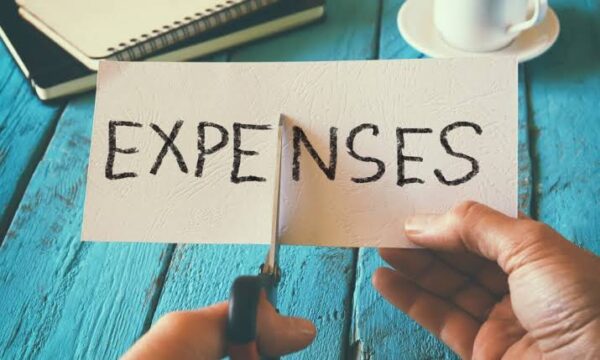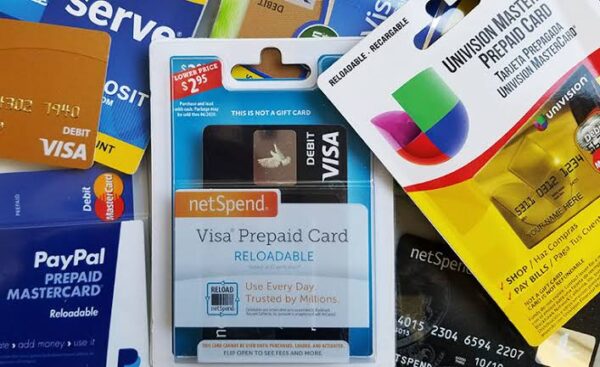Last updated Jun. 13, 2023 by Favour Chinaza
21 Cheapest Ways to Cut Your Living Expenses
There are cheap ways for you to cut your living expenses without having to starve or miss out on the good things in life. So don’t go about piling up debts when you can easily live a decent life by doing the bare minimum.
Like many Americans, if you frequently have too much money at the end of the month, it’s natural to consider acquiring a better job or starting a side hustle.
That’s not to say there’s anything wrong with it. However, the real issue may not be how much you earn but how much you spend. You may need to cut costs, possibly dramatically.
What Exactly Are Living Expenses
Living expenses are the regular costs that people have to pay to meet their basic needs and maintain a certain level of living.
Most of the time, essentials like living, utilities (electricity, water, gas), groceries, transportation, healthcare, insurance, and personal care products are included in these costs.
Other usual costs of living include communication services (Internet, phone), household supplies, clothing, education costs, and entertainment.
Depending on location, lifestyle choices, family size, and personal preferences, living costs can differ for each person.
They are the costs you must pay daily to stay alive and live a happy, useful life.
To budget, plan your finances, and live a financially healthy life, you need to know and keep track of your living costs.
Good Read: 10 Ways to Save Money on Groceries
What Are the Examples of Your Typical Living Expenses?
Examples of our daily expenses include:
- Rent or mortgage payments
- Utilities (electricity, water, gas)
- Groceries
- Transportation costs
- Health insurance premiums
- Dining out
- Phone bills
- Internet service
- Clothing and shoes
- Entertainment expenses
- Personal care products
- Car payments or lease
- Insurance premiums (auto, home, etc.)
- Student loan payments
- Gym or fitness memberships
- Childcare expenses
- Pet care expenses
- Home maintenance costs
- Property taxes
- Retirement savings contributions
Average American daily living expenses include:
- Morning coffee or tea
- Breakfast items
- Lunch at a restaurant or cafeteria
- Snacks
- Public transportation fares
- Fuel for commuting
- Groceries
- Personal care products
- Household supplies
- Dining out for dinner
- Entertainment activities (movies, concerts, etc.)
- Subscriptions (streaming services, magazines, etc.)
- Online shopping purchases
- Gym or fitness memberships
- Parking fees
- Toll fees
- Take-out or delivery meals
- Pet supplies
- Home utilities (electricity, water, internet, etc.)
- Miscellaneous expenses (tips, impulse buys, etc.)
Are Living Expenses Different from Monthly or Daily Expenses?

Costs of living include both weekly and daily expenses.
They are the costs that must be paid on a regular basis to meet basic wants and keep a certain standard of living.
Most monthly bills, like rent or mortgage payments, energy bills, insurance premiums, and loan payments, come due every month.
These costs are paid every month and make up a big part of a person’s general living costs.
On the other hand, daily expenses are the smaller costs you must pay daily for things like food, transportation, meals, and personal care items.
These costs are usually small, but they add up over time and become a part of the total cost of living.
Even though monthly costs make up a big part of living costs, daily expenses also play a role in a person’s total financial health.
For a healthy budget and financial stability, keeping track of and managing monthly and daily costs is important.
How Cutting Your Living Expenses Helps You Focus on Your Financial Goals
Cutting your living costs can help you reach your financial goals in more than one way.
First, cutting back on costs gives you more money in your budget that you can use for savings or to pay off debts.
You can save more money each month by cutting out useless spending and being more aware of how much you spend.
This money can increase over time and help you reach your financial goals. Additionally, cutting living costs helps make a more financially stable way of life.
By living within your means and spending less than you earn, you can avoid getting too much debt and lower financial stress.
This gives you a better financial base and more stability to work toward your long-term goals, like saving for retirement, buying a home, or paying for your kids’ college.
Lowering your living expenses is definitely one of the steps to achieving financial freedom and giving you power over your money.
You can put money toward your interests and financial goals by keeping track of your expenses well.
Whether you want to save for a down payment on a house, start your own business, or take a dream trip, cutting expenses will give you more money to spend.
This will help you reach your goals and live a happier, more financially secure life.
Overall, lowering your living expenses allows you to save more money, pay down your debt, and have more control over your financial future.
It sets you up for long-term financial success by helping you build a strong base and put your money toward your most important goals.
Can Making a Budget Help Me Cut My Living Expenses?
Making tiny budget changes may have little impact on your financial situation. However, you might be amazed at how many advantages there are.
First, cutting back on spending allows you to put more money toward debt repayment. And you know how crucial this is if you’ve been battling to make a dent in your debt level.
And the faster you pay off your loan, the less interest you’ll have to pay.
Cultivating a budgeting mindset and cutting down on your expenditure can also help you achieve your other financial goals more quickly.
Extra money in your budget can make a big difference when it comes to saving for a vacation, paying a down payment on a property, or getting started with investing for the first time.
Furthermore, every bit of savings counts if you have a modest salary.
To assist you in your goal of living a better life on low budget, this article looks at the cheapest ways you can lower your cost of living.
21 Cheapest Ways to Cut Living Expenses
1. Get A Prepaid Card

Getting a prepaid card is undoubtedly one of the best ways to avoid debts and unnecessary spending.
With a prepaid card, you can budget the amount of money you want to spend in a month and have a full report of your spending anytime you want to avoid irregularities.
And just so you know, a prepaid card is a card that enables you to spend the exact amount of money you load into it hence restricting your spending.
A prepaid card doesn’t allow you to spend beyond your fund or create debts.
Another benefit of a prepaid card is its lower fee charge for each transaction, unlike banks or credit cards.
2. Take Public Transport or Share Rides
Owning a private car may not be the best decision to make when considering cutting your living expenses.
This is because fuel, maintenance, and parking costs are enough to cover other important living expenses.
So to cut down on your cost of transportation, it’s best to consider taking public transport.
Aside from being inexpensive and reliable, public transport also offers you a way to cut down your budget to the lowest through its discount pass, season deals, and free bus service deals.
You can also save on your transportation expenses by sharing rides with neighbors or friends.
3. Bulk Buy Non-Perishable Items

Plan ahead of time and buy in quantity! This is a no-brainer if you know you regularly use and consume particular goods!
Paper towels, olive oil, happy wrap, laundry detergent, cleaning supplies, dishwashing tablets, and more are all higher-priced supermarket items.
The above items have a long shelf-life and can greatly lower your yearly shopping expenses if purchased in bulk. You can also take advantage of different ways to save money on groceries.
However, a word of caution: always be selective when purchasing bulk and only buy things you know will be consumed before the expiration date.
Rice and oats, cereal, muesli bars, vegemite, peanut butter, tuna, flour, and sugar may all seem like great things to keep in your pantry.
However, before you start stockpiling them, consider your overall household frequency and consumption.
Okay, you probably think this will cost me extra at the register! True, but the money you’ll save in the long run is well worth it!
Consider Bulk-buying Pet Food
It’s a reasonably priced item with a lengthy shelf life, and if you own a pet, you know it’ll be consumed because your pet has to eat.
A 4kg bag of dog food costs $59.98 at a local pet store, while a 15kg bag costs $154.80. If your dog goes through a 4kg bag every two weeks, you’ll need to buy 25 bags each year, which will cost you $1,562.48.
If you buy a 15kg bag, you’ll only need 7 bags per year, saving you $1,020.60 and $538.88 per year on dog food compared to buying the smaller bag.
Consider how much you could save per year if you did this with all of your high-consumption groceries!
Bulk buying is undoubtedly a way to save extra money because things bought in bulk are cheaper. But it can come with a few challenges if not done properly.
Here are some bulk-buying tips to help you save some cash while cutting down your living expenses:-
- Buy the right things in bulk and avoid buying perishable items in bulk.
- If possible, split the cost of a bulk item with friends.
- Don’t overstock an item. It may end up getting spoilt.
- Items like toiletries, beverages, and rice can be bought in bulk.
- Avoid bulk buying items, snacks, fresh produce, and egg.
- Unnecessary trips to stores can cause impulse buying, so you should buy things in stock and prevent the need to go shopping.
4. Create a Food Budget
The truth is, healthy eating isn’t expensive. You just don’t know how to plan your food budget. You can eat and save healthily if you have a good food budget.
Having a good food budget doesn’t only help you erase unwanted expenses; it also enables you to create extra cash that can be saved.
Here are some tips to help you create a good food budget:-
- Find out the prices of food items before going to stores.
- Make a list of things to buy and adhere strictly to it.
- Check out for coupons.
- Know the store layout and avoid going to sections that can encourage you to spend.
- Buy items in season
- Buy the Right Things in Bulk
You must have heard that buying foods and household products in bulk can help you cut your expenses; it’s true if you buy the right things in bulk.
5. Use Cash During Payment

Paying money in cash may seem inconvenient, but it’s a smart way to have a handle on your expenses.
If you’re curious about how cash payment can help you keep your expenses in check, read the facts below.
When you make payments for things in cash, you become conscious of your financial status, and then you become less prone to impulse spending.
This is because the process of watching your money being taken and exchanged for something will set you into reality.
Paying for things in cash helps you keep good track of spending. It enables you to know how much you’ve spent and how you should have spent.
So to begin your journey of cash payment, simply redraw a budgeted amount of money and stick to spending only that amount for a week or month.
6. Rent the Right Apartment
The apartment you choose to rent greatly impacts your living expenses, so when choosing a place to rent, it’s best to consider certain factors, as mentioned below.
Location:- to avoid unnecessary living expenses, you need to rent an apartment that makes it easy for you to save.
In other words, the place you stay has to be close to your working area and grocery store to enable you to cut down on transport costs.
The Cost of Rent:– if your monthly rent eats up a good amount of your salary, it’s time you consider changing where you stay. There are also legit ways to live rent-free you can explore to cut your living expenses.
How Often will the rent Increase and by How Much?:-
When renting a place, be clear on how often the rents will be increased. This will prevent you from unnecessary expenses on rent.
Cost of Parking:- the cost of rent is enough to have you living on a tight budget, so you don’t need to rent a place with high parking costs.
7. Cut Costs on Home Utilities

Whether you rent or buy, basic household expenses can consume a significant chunk of your budget.
However, increasing your home’s energy efficiency can reduce prices and save you money on household expenses.
There are ways to save money on utilities, especially during winter that you can start. Some of the helpful hints are:
1. Set your thermostat. You can save money by setting your thermostat to use less heat and air conditioning while you are away.
2. Change your light bulbs. It would be best if you thought about installing energy-saving light bulbs. They not only use less energy than regular bulbs, but they also last longer.
3. Seal and insulate your home. According to Energy Star, the average home has so many leaks that it’s equivalent to keeping a window open every day of the year.
Insulating your home and sealing windows and doors can dramatically reduce your home utility expenditures.
4. Improve your water efficiency. Repairing leaks and installing water-saving gadgets can save you up to $350 per year.
5. Turn down the heat on your water heater. Lowering the temperature of your water heater from 140 to 120 degrees Fahrenheit will help you save up to 22% on your annual power bill.
6. Consider your choices for relief. If you’re having trouble paying your utility bills, you might be eligible for assistance with part of your home energy costs.
Electricity bills can eat you up without your knowledge. Hence it’s high time you reconsider how you use your electricity.
Reducing your electricity bill by 25% is possible. You just have to follow these simple tips.
8. Share Subscription Bills with Friends
Cutting down on your living expenses doesn’t demand you unsubscribe from things that keep you happy.
If Netflix is your mini-comfort zone, you can enjoy it to the fullest without having to bear the expense brunt of it.
This is possible by sharing your subscription bills with friends or family. Streaming services, cell phone plans, car insurance, and file storage subscription bills can be shared with family.
So before you subscribe to a service, find out the terms and conditions to see if there’s a family subscription plan.
9. Live with a Friend and Share the Rent Bills
Housing is certainly one of your largest expenses; those earning less than $50,000 per year spend 36.6% or more of their income on housing.
This is more than the 30% rule of thumb financial experts advocate.
Lenders prefer to see someone spend roughly 28% of their pre-tax income on housing when reviewing mortgage applications.
Reducing housing costs may appear to be a nuclear option, but it is something to think about, and there are ways to downsize that may be easier than you think.
You probably aren’t the only one amongst your friends who wants to cut down on living expenses.
If there’s a friend you’re close to who won’t mind sharing a room with you, you both can split rent bills.
Doing this will cut your rent bills by half and cause your utility bills and other housing expenses to be split into two.
10. Cancel Your Credit Card

Having a credit card may be convenient for the fact that it allows you easy access to credits, but it is for this exact reason that you should consider canceling it.
A credit card makes spending too easy, and as someone aiming to cut down on living expenses, you should avoid anything that will trigger impulse spending.
Having a credit card makes you vulnerable to challenges such as; a high-interest rate, credit damage, high annual fees, and overspending. Besides, canceling your credit card may be one way to help you clean up bad credit.
11. Switch to a Cheaper Cell Phone Service
Your expenses on cell phone services may seem like they do not affect your overall living, but you would be surprised to discover what happens when you cut them down by 50%.
Also, your cell phone service may be costlier than you think, so you can also look for ways to get cheap cell phone services.
If toning down the amount of money you spend in a month is what you want, it’s time you consider evaluating your cell phone service subscriptions.
There are cheaper options when it comes to choosing a mobile virtual network operator, just do your research and stick with the cheaper plans.
You can also decide to share the subscription bills with your friends and family. This will go a long way in helping your family, friends, or neighbors cut down their cell phone expenses too.
12. Share your Internet Bills
A shared internet bill is another cheap way to lighten your living expenses.
You can dramatically cut the amount you spend on internet connection by splitting the cost with roommates or neighbors.
Internet costs can be a considerable monthly expense, and splitting the bill allows you to save money while still having access to the internet.
This cost-sharing arrangement might be especially advantageous for individuals who live in shared spaces or apartment complexes.
Second, splitting internet expenses allows you to choose higher-speed internet plans or better service alternatives that would otherwise be financially out of reach if you were paying for it alone.
You can upgrade your internet plan and enjoy faster and more reliable internet connectivity with communal contribution, which can be advantageous for remote work, online education, streaming, or other online activities.
Sharing your internet bills can enhance your overall online experience without breaking the bank.
Overall, splitting your internet expenses allows you to minimize your own financial load, save money, and maybe gain access to superior internet services.
It enables you to reap internet connectivity’s benefits while controlling your living costs.
If you stay with friends or family, you can talk to them about splitting the internet bills. This will help you lower your internet expenses to a great degree.
If you are in a rented apartment, you can talk to your neighbors about the idea of a shared internet connection.
13. Look into Your Taxes

If you’re like most people, you probably don’t think about taxes much until April 15th.
However, taxes touch us daily, whether working, shopping, or preparing for significant milestones such as retirement.
Here are a few ideas for tax cuts:
As it turns out, the autumn season is ideal for tax cuts. This year, 16 states supported sales tax exemptions for back-to-school purchasing.
The dates are normally set between the last week of July and mid-August.
If you are a low-income earner, you can take advantage of tax benefits. One in every four eligible taxpayers fails to claim the earned income tax credit, or EITC.
This can be worth up to $5,900 per year depending on salary, marriage status, and whether or not they have children or other dependents.
If you qualified for but did not claim the EITC, file an amended tax return.
14. Buy Items in Thrift Stores
The urge to buy something new and firsthand is understandable. However, if you want an edge over your expenses, consider buying thrift store items.
Thrift stores have a lot of unique items with cost-efficient price tags, so although it might be time-consuming to sift through rows of items to find something special; it’s worth it in the end.
Things are continuously in and out of style, and quick fashion retailers are generally bad for the environment.
Thrift stores, on the other hand, recycle clothes that would otherwise pollute the environment and help save the earth!
Not all thrift items are dirty. If you take your time to look through it, you’ll find the item that’s right for you.
Also, stop buying branded products
If reducing your living expenses to the barest is what you’re after, then you’ll have to do away with the habit of buying branded products because they offer you nothing but validation and social significance – which isn’t a problem.
Many products offer the same services as branded products at cheaper rates, and it’s time you began to look into them.
If you aren’t sure about the quality a cheap product offers, ask friends who must have tried it out.
15. Begin Keeping Track of Your Spending Habits
The first step in reducing spending is determining where the money is going. It won’t be hard to pinpoint the habits of broke people immediately after you look at their spending habits.
Tracking your spending for 30 or 60 days will most likely be eye-opening. Who knew you were spending so much money on your Kindle or coffee habit?
You may be surprised at how much you’ve spent on certain items, but this gives you a good chance to see exactly where adjustments are needed going forward.
The traditional tracking method is to write down each expense as you incur it. This time-consuming exercise puts many cost-cutters on hold.
Thankfully, we live in the twenty-first century, and technology can do our “writing down” for us.
Check your statements if you pay for everything using a debit or credit card.
Examine everything you bought and decide what you really needed and what were “wants.”
Printing out the statement and using different colored highlighters or pens to identify different spending categories is one approach to make things obvious.
Alternatively, write them down under “needs” and “wants” headings.
Some banking companies even include a graph or pie chart with spending categories on debit card accounts to indicate where your money went.
If you do spend cash, make sure to keep your receipts.
16. Shop with a List

There are numerous methods for saving money at the grocery store, but it all begins with a shopping list.
This simple practice will help you save money on food, plan meals, and reduce impulse purchases if you keep to the list.
It may be as simple or as complex as you like, and there are even apps that can help you construct lists and find deals.
Going shopping without a plan or list can make you end up with lots of unnecessary items in your cart.
To prevent this scenario from happening, plan what to buy while at home and go shopping with the list.
Here are some pointers:
- Maintain a shopping list throughout the week, plan your meals, and add items to the list before you leave.
- Sort the goods on the list into categories (produce, deli, dairy, etc.) or arrange them in the order they appear in the store. This will prevent you from straying down the candy or chips section, where expensive impulse purchases await.
- Comparing brands and stores while shopping at one or two places is less expensive than driving around the neighborhood looking for bargains at several locations. You can start comparing with Target’s price match policy.
- Check whether a local grocery store has a loyalty program, as many do, with discounts on store-brand items and coupons tailored to your regular purchases.
Most rewards programs include an app, and if you have a smartphone, it’s as simple as scrolling before you go and putting your phone number in when you check out.
Many have a list function that allows adding items you frequently buy.
To help further, it’ll be better to go shopping with the exact amount of money on your shopping list. This trick will save you from a lot of avoidable spending.
16. Have a Budget Plan
Having a spending plan would sound like something that can only be read online and not practiced, but this is because you aren’t doing it the right way.
To have a spending plan that forces you to stick to it, there are certain things you have to do.
Correcting your budget plan will lower your spending margin as well as leave you with some savings.
Here are some tips to help you create a good spending plan:-
- Know your net income and set realistic spending goals.
- Be clear on your monthly expenses to enable you to create a transparent plan.
- List out the important expenses and unimportant ones.
- Hold the amount to be spent in cash to enable you to track your expenses.
Don’t be tempted to take money from that to spend on other things. Your top priority should be to cut costs so you can keep working toward your debt-free goal.”
But you should also include small goals because they help you measure your success, and reaching these steps can help you stay motivated.
There are three main steps to making a budget, which are:
Find out how much you make, then determine set monthly bills – mortgage or rent, utilities, car payment, insurance, etc.
Find out what you need, like food, gas, hospital bills, etc.
What’s left is your “discretionary spending.” Choose how much of that you want to save for an emergency fund and how much you want to use to pay off your credit card debt.
There are a lot of apps and other tools that can help, as well as a lot of budgeting tools and plans you can find online.
When you’re done, it may seem like you don’t have much money left for anything else. But the fun part comes: finding out how to cut the fat.
17. Check If You Are Eligible for Food Aid Programs

The most common place to get help getting food is the government SNAP Program, which used to be called “Food Stamps.” However, it is not the only place to go.
Whether or not you can get SNAP benefits depends on your income and how many people you live with in each state.
The rules change often, but a person’s gross income generally can’t be more than 130 percent of the federal poverty line.
In 2023, a single person would need to make less than $1,500 monthly in gross income to qualify. For every person who comes in after that, the bar goes up by about $500 per person.
After that, most states have aids like a Department of Children and Families Services or another government agency that will help people or families with food if they meet the state’s requirements.
A lot of churches and non-profits have their own food pantries where they give away mostly non-perishable things for free.
Lastly, some charities have opened shops selling food at very low prices. Sometimes there aren’t many options, but you can save anywhere from 25% to 50% on most things.
18. Look for Cheaper Insurance Deals
Don’t go spending more than required on insurance when better insurance companies are out there with much better deals.
Always do your research by comparing the rates of different insurance companies to enable you to find cheaper deals.
And before you sign up for insurance with a company, be sure to check out their discounts.
Another strategy to cut monthly spending is to make changes to your house and auto insurance policies.
If you pay for both, look for providers that will package them for a lower price.
You may also be able to reduce your rates according to your kind of homeowner or driver.
Check for businesses that provide lower rates for a clean driving record or for individuals who drive a less expensive automobile to save money on car insurance.
Automobiles with greater safety features may also qualify for lower rates.
Other tips for reducing car insurance expenses
Boost your deductible. This is the amount you pay before insurance kicks in.
Increase yours from $250 to $500, and you’ll save money on your insurance premium because you’re essentially agreeing to bear more financial risk in the event of an accident.
Reduce the coverage for your old cars. If your wheels aren’t worth much, consider dropping collision coverage, which covers for repairs.
Take advantage of low-mileage reductions. Have you reduced your driving to save gas? Inform your insurer. Rates can be reduced if you don’t drive much, usually less than 7,500 miles per year.
Combine your policies. According to the Insurance Information Institute, you may be eligible for a 5 to 15% discount if you purchase multiple policies from the same insurer.
So, attempt to keep all your insurance coverage with the same firm.
Make age-appropriate auto decisions. The age of a motorist may affect insurance premiums.
As a result, limit your teen’s driving privileges to the family’s oldest vehicle. Then, notify the insurance provider that your son or daughter has no access to any of the more valued vehicles you possess.
Check for AAA Eligibility
Senior citizens may also face higher charges. Seniors aged 55 to 70 may be eligible for price cuts if they attend a safe-driving course, such as the AAA and the National Institute of Highway Safety’s 55Alive program.
Being a member of an organization such as AAA is advantageous if you want to cut your living expenses.
Check your policy to see if your provider offers reduced rates for making upgrades to save money on homeowners insurance.
Installing smoke and carbon monoxide detectors, as well as burglar alarms, may result in discounts. Upgrades to electrical or heating systems can also be beneficial.
Consider increasing your deductible from $500 to $1,000, which can save you up to 25% on your premium.
Look for insurance firms that may provide a better rate. For advice on choosing a good insurer, see the National Association of Insurance Commissioners (NAIC.org).
However, see whether your insurer offers a discount if you’ve been with them for six years or longer.
19. Cancel Gym Membership and Consider Doing Workouts at Home

Paying for a gym session is great but not a smart decision to make when trying to ease your living expenses.
So what decision do you make? It’s simple; you just have to cancel your membership. You don’t need fancy equipment to get shredded!
Large corporate gyms have been telling us for years that we need expensive equipment to work up a sweat and sculpt great muscles.
That is not entirely true. During the lockdown, we discovered that you could utilize household items as weights and achieve a full-body workout without any equipment.
If you want to save money, consider canceling your probably underutilized and costly gym subscription.
You can use household heavy items (and other bulk buys) as a substitute dumbbell if you need to lift.
Those body-weight exercises are just as effective at home or the gym. We’re talking push-ups, sit-ups, planks, dips, and other body-weight exercises.
Most times, running a treadmill is the same as running two streets of the estate where you live.
You can do everything in the comfort of your own home, or set up basic gym equipment at home.
It is more cost-effective and don’t forget you can walk or run anywhere!
Canceling your gym membership will have no effect on your body goals if you do workouts at home.
Also, many practice videos on YouTube can help you stay up to date with your workout session without feeling left out.
If you’re unsure how to complete a full-body workout without equipment, there are plenty of free programs and step-by-step tutorials on YouTube, and if you’re stuck, just google it!
You can still get a six-pack, powerful pecs, huge biceps, a flat tummy, rounder hips, and other physical features without paying gym fees.
20. Consolidate Debts
If you don’t pay cash for everything, which is a good goal but hard to reach, debt is probably a big part of your regular expenses. Loans for cars, credit cards, and school all add up.
Each of these loans costs you a different amount of money, and each may have been the best deal you could have gotten at the time.
But you might do better if you look at your debt as a whole.
Loan consolidation means putting all of your monthly loan payments into one. It can work especially well if you have a debt on one or more high-interest loans or credit cards.
These may be one of the money hacks to get you out of financial trouble.
If you pay your monthly bills on time, a single loan with a lower interest rate can lower your monthly costs and help you pay off your debts faster.
Transferring your credit card debt to a single low-interest card can also help, but you may only have 18 months to pay your bills before the interest rates increase.
A debt management plan, which you can get from a free credit counseling program, is another way to deal with credit card debt.
Credit counseling services help people come up with a monthly budget that they can afford and will help them pay off their credit card debt.
Card companies offer to lower their customers’ interest rates if they pay one monthly payment to a non-profit guidance agency. The agency then pays each card company.
21. Cut Entertainment Costs
Take advantage of the wonderful outdoors. There’s a huge world out there waiting to be discovered on the cheap.
- Hiking
- Biking
- Running
- Stargazing.
Having fun outside is a simple way to save money on your entertainment budget because it is possible to treat yourself on a budget.
Another way to cut your living expenses is to make unique plans for dates. Most people think expensive dates are the only way to maintain passion.
However, the truth is that it is not necessary to spend a lot of money to show a lot of affection.
Plan inventive, budget-friendly dates that you’ll genuinely want to go on to reduce your date night expenses.
You can fill a picnic basket with popcorn, apples, various slices of cheese, and (of course) chocolate, then take it for a delightful hike.
Bring home Chinese takeaway and eat directly from the boxes while watching your favorite program on Netflix.
Before stopping for coffee and dessert, peruse the aisles of a used bookstore. Enjoy the quality company over the price.
What are the Cheapest Ways To Cut Your Living Expenses on Food?

Cook Your Food At Home
Eating out is a very good money-consuming habit that you have to stop if you’re aiming toward a stable financial life.
Cooking at home is much better, cheaper, and healthy. So try reducing your spending by buying inexpensive cooking ingredients and making do with them.
Consume any Leftovers
Don’t let what’s left over after dinner suffer a lingering and moldy death in a Tupperware coffin in your fridge.
That is a waste of both food and money. Make good use of that food. Enjoy it for lunch the next day, or add a leftovers night to your weekly meal plan.
This prevents you from purchasing new meals at each mealtime and is a simple method to save money.
Purchase your Groceries Online
When you order groceries online, you can keep track of the overall price as you go. You can remove goods from your virtual cart before checking out if you go over budget.
There are other different ways to buy groceries on a budget.
You don’t have to walk through the grocery store with a calculator in hand to avoid being shocked at the checkout.
You’ll know exactly how much you’ll pay when you place your order, and you’ll be much less likely to buy that family-size bag of sour gummy worms on the spur of the moment.
For instance, when buying perfume, go for the pint-sized ones to test them first! Remember, you’re aiming to save money, not introduce a new temptation into your life.
So, if internet shopping makes you spend more money, go back to purchasing in person.
Look for BOGOs, Weekly Advertisements, and Discounts.
Stores offering BOGO (buy one, get one) deals are begging you to save money. They’re laying out their best deals for you to take advantage of. How about using this cost-cutting strategy?
Make your meal plans based on the weekly ads in your grocery shop. You can even fill the pantry and freezer ahead of time.
Simply make sure your purchases are within your budget. Never buy something just because it’s on sale, and don’t forget what you’ve purchased when preparing meal plans weeks later. Wasting is not the same as saving.
Don’t forget about the coupons! You’ve undoubtedly heard it a thousand times, but coupons truly do help you save money.
Even coupons obtained online can occasionally be redeemed in-store.
Make Your Own Coffee.
Spending $6 a day at your favorite coffee shop adds up to $42 per week and $180 per month.
Instead, you might reduce that cost to roughly $25 per month by brewing your own coffee. Then put the $155 to use elsewhere in your budget!
Brown-bag your Lunch
Stop eating lunch at the same place every day. And stop spending money at the vending machine or the office snack shop during the day.
Remember how we said you should plan snacks into your meal plan? Keep some snacks at your desk and bring your lunch most days of the week.
It’s fine to dine out once in a while if the budget allows.
Bringing in leftovers or brown-bagging a sandwich, fruit, and pretzels, as you did in middle school, is a great way to save money on lunch.
Cook Your Lunch and Take to Work
Leaving to work with your credit card in hand can trigger a lot of impulse spending. So to avoid this situation, simply consider taking your lunch to work.
To get the best results, keep your bank cards at home and go to work with a predetermined amount that’ll solve only your transportation costs.
With a lunch box and a limited amount of money, you’ll be able to tone down the amount you spend each day, thereby cutting down your living expenses.
Other Cheap Ways to Cut Daily Living Expenses

We have a couple more money-saving ideas under our sleeves. Here are some of our final spending-cutting suggestions.
Remove any shopping apps from your phone
Don’t get too worked up. We’re not suggesting that you never shop online.
Removing those store apps from your phone creates a barrier between yourself and mindless scroll-shopping.
With those apps, your thumbs can tap-tap-tap things into your basket and mailbox that you don’t really need.
But you’ll think twice about hopping on the laptop to buy that new sweater if you have to get up from the couch to do so.
Use a Bicycle
When reviewing your monthly expenses, it’ll shock you that transportation costs take away a large chunk of your income.
So if using public transport doesn’t help cut down spending too much, then using a bicycle will help a lot.
It may sound odd and old school, but it’s a smart way to block off every expense resulting from transportation.
Go on a Short-term Spending Freeze.
Go on a spending freeze if you really want to push yourself.
This can include committing to a “no spending day” challenge or embarking on a “nothing but the essentials” week—or month!
However, if you wish to go without spending any money for the full day, please check your gas tank first. (Another helpful hint!) Nobody wants you to be stuck on the side of the road.)
Spending freezes are an excellent approach to reduce spending temporarily. They can also help you become more conscious of your spending habits and grateful for what you already have.
Get Rid of Your Credit Cards.
What is the best way to get ahead? Stop falling behind schedule. Doesn’t that make sense? Apply that logic to your finances!
Using credit cards puts you behind in your finances because you’re still paying for your mistakes in the past.
Instead, stop using credit cards, go cash only, and start actually owning things.
When you eliminate debt payments from your budget, you will have more money to invest toward your savings goals. That is advancement. That’s lovely.
Wait Before you Buy
If you’re considering a large purchase, take the time to compare pricing, analyze the advantages and downsides, and consider whether you actually need the item.
Sure, you wanted that new, genuine leather, flannel-lined laptop cover as soon as you saw it.
But will you still want it in six months? Impulse purchases can be costly. Before making large purchases, exercise some patience.
You can save money by finding a better price during that research time—or you can fully avoid the cost by deciding not to buy at all.
How To Cut Your Banking Living Expenses
Compare Prices Before Shopping
Switch banks, credit cards, and even brokerage accounts draining your funds to competitors offering better prices.
The “Compare Rates” option online makes it simpler to find the best deals. Read the small print. Pay attention to criteria that could end up costing you a lot of money.
Although a free checking account sounds enticing, is there a minimum balance requirement?
If you fail to satisfy it, you may end up paying costs that make the free bargain more expensive than you anticipated.
Keep an Eye Out for ATMs.
Pull larger amounts of cash from your ATM whenever feasible to avoid returning to the machine. The average ATM fee for non-bank account holders was $2.77.
Some banks, however, impose a higher fee. Add the foreign-use penalty. When you use a competitor’s ATM, you may end up spending nearly $5, or 25% of the $20 you grabbed on the run.
Reduce Debit Card Payments
Putting the debit card away reduces the likelihood of incurring courteous overdraft protection fees.
They kick in when you use a debit card to make expenditures that exceed your account balance.
According to the most recent Bankrate checking research, overdraft fees currently average $32.74 per transaction.
Pay Your bills on time.
Ensure you avoid default rates on payment. You will almost certainly be fined heavily if you miss a payment date.
If you are late on one bill with any creditor, your other creditors have the legal right to raise the interest rate they charge you.
When you receive bills, put the due date on a calendar or set up automatic payments to avoid missing deadlines.
Always Scrutinize Your Bank Statements
Over two-thirds of lenders claim they can adjust rates anytime for any reason.
Even if you pay on time every month and believe you’re an excellent client, go over your account and look at the fees, interest rates, and other unexpected changes that can cost you a fortune.
Using these reduction tips, you can cut your living costs by a lot and have more room in your budget for savings.
It is important to stay committed, evaluate your progress, and review and change your budget to keep your finances stable and well-balanced.
Before you decide how much to spend, you should do your homework. This will help you stay out of debt and live within your means.
Good Read: 11 Great Ways to Save Money Without a Bank Account
Bottom Line
How much money you save tomorrow will depend on the little things you do today to cut costs. So be smart! Start by looking at how you spend money now and finding places where you could cut back or find cheaper options.
Clearly distinguish between what you need to spend money on and what you don’t, and focus on your basic wants first. Yes, there are things you can do to lower your living costs and save money. Start by looking at how you spend your money now and figuring out where you can cut back or find cheaper options.
This could mean spending less on things you don’t have to do, like going out to eat or leisure. Think about how you can save money on things like housing, power, transportation, and groceries by finding cheaper options, negotiating bills, and looking for discounts.
You can lower your living costs and find ways to save money for future goals or emergencies by putting your spending in order of importance, making smart choices, and checking your budget often. Lastly, set up automatic payments to a savings account so that a regular amount of your income goes to savings.
Frequently Asked Questions
Q: How do I start cutting my living expenses?
- Begin by documenting your spending to identify areas where you may cut back or find more cost-effective options.
- Make a budget to prioritize necessary expenses and set aside funds for savings.
- Look for non-essential expenses that you can cut or eliminate to save money.
Q: How do I calculate my living expenses?
Simply add up all your monthly fixed expenses, such as rent or mortgage payments, and your variable expenses, such as food and gas. Consider one-time but expected purchases, such as new tires. The resulting number is your cost of living, provided you don’t get into debt every month.
Q: How can I save money on housing costs?
- Consider downsizing to a smaller, less expensive living space.
- Look for housemates to split housing costs.
- Negotiate your rent or look for cheaper solutions.
- If you are eligible, look into housing aid programs or subsidies.
Q: What is the 50-30-20 rule?
The 50/30/20 rule is a budgeting approach that divides your money into three basic categories based on your after-tax income (i.e., take-home pay): 50% for needs, 30% for wants, and 20% for savings and debt payments.
Q: What are some effective ways to save on utility bills?
- When not in use, turn off lights and unplug equipment.
- Make use of energy-saving equipment and light bulbs.
- Reduce your heating and cooling bills by adjusting your thermostat.
- Fix leaks and use water-saving fixtures to save water.
Q: How can I cut back on my living expenses?
The following tips can help you cut your living expenses:
- Reduce your fuel costs. A lighter car load can also contribute to fuel savings
- Accept energy-saving appliances
- Don’t let your savings go to waste
- Pay less for your home
- Examine the available assistance
Q: How can I reduce my grocery expenses?
- Make a grocery list and plan your meals ahead of time to avoid impulse purchases.
- Instead of buying name goods, opt for generic or store-brand products.
- Look for sales and use coupons or discount codes to save money.
- Consider buying in bulk for things that are regularly used.
Q: What are some reasonably priced transportation options?
- To save money on gas, take public transportation or carpool with others.
- Short-distance commuting can be accomplished by walking or biking.
- Instead of owning a car, consider using ride-sharing or car-sharing services.
- To guarantee fuel economy, keep your car in good condition.
Q: How can I lower my entertainment expenses?
- Reduce your eating out and cook more meals at home.
- Look for free or low-cost entertainment in your neighborhood, such as parks, libraries, or community events.
- Unused subscriptions or memberships should be canceled.
- Borrow books, movies, or games from the library instead of purchasing books, movies, or games.
Q: How can I control my daily expenses?
Follow the 50:30:20 rule: by spending 50% of your salary on needs and 30% on wants, you may avoid overspending on things you don’t need while also ensuring that some cash is set aside for savings. Rent, mortgage, utilities, groceries, clothing, and other expenses would be considered necessities.







